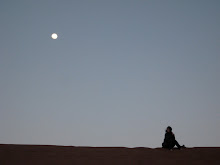 In Devotion, Sarah Michelson casts two male actors—James Tyson and Jim Fletcher of the New York City Players—to dance alongside Rebecca Warner, Non Griffiths, Nicole Mannarino and Eleanor Hullihan. Griffiths, now 14-years-old, started dancing for the eminent downtown choreographer when she only 9; Michelson has explored, in the past, ideas about authorship and virtuosity through the “naïve bodies” of preteen girls. In Devotion, which is an epic two-hour, aggressively physical ballet inspired by a piece of text by Richard Maxwell, she creates movements in which highly trained female bodies interact with the literal interpretation and visible exhaustion of male partners. All are put through enormously athletic, relentlessly repeating movement sequences. Tearing apart and re-combining components of ballet with outsized yoga poses and substantial references to Twyla Tharp’s In The Upper Room (including the piece’s Phillip Glass score), Michelson meets the religious content of Maxwell’s text with pure dance—movement riding the line between possible and not.
In Devotion, Sarah Michelson casts two male actors—James Tyson and Jim Fletcher of the New York City Players—to dance alongside Rebecca Warner, Non Griffiths, Nicole Mannarino and Eleanor Hullihan. Griffiths, now 14-years-old, started dancing for the eminent downtown choreographer when she only 9; Michelson has explored, in the past, ideas about authorship and virtuosity through the “naïve bodies” of preteen girls. In Devotion, which is an epic two-hour, aggressively physical ballet inspired by a piece of text by Richard Maxwell, she creates movements in which highly trained female bodies interact with the literal interpretation and visible exhaustion of male partners. All are put through enormously athletic, relentlessly repeating movement sequences. Tearing apart and re-combining components of ballet with outsized yoga poses and substantial references to Twyla Tharp’s In The Upper Room (including the piece’s Phillip Glass score), Michelson meets the religious content of Maxwell’s text with pure dance—movement riding the line between possible and not. Michelson herself does not appear onstage in person, but is the subject, with Maxwell, of luminescent portraits by TM Davy that hang high along The Kitchen’s black walls. When I first entered the Chelsea space—which was rotated lengthwise with the high tapered seating removed, fewer but longer rows of chairs lined up against the side wall—the images emerging from pure black background seemed alive, as if the hanging canvases were windows through which one actually saw human beings posed in stillness. Michelson’s voice was also present. It piped into the space over the speakers—alternating with or accompanying musician Pete Drungle’s loud, atmospheric score—as Warner, playing the Narrator, physicalized Maxwell’s personal, colloquial version of the Old and New Testament.
Warner worked her way around the room with a commanding yet neutral presence. She lunged forward with her upper spine arched and arms outstretched as if they might reach out of even her own skin, tilted from the waist, and spun with one or two arms out. Meanwhile, Michelson read: “Eve settles down and says plainly: We really are simple things. Simple, fearful things.” She continued, “Mary holding babe in the oblivion of no sleep. Let this be ordinary. Let it be away from the current. Let her have her time with her child. Mary, Jesus.” Fletcher played the physically demanding role of Adam—during the second hour he was literally running around the space, catching the Eve as she threw her body repeatedly into his arms. Tyson was Jesus opposite Girffiths’ Mary.
Her white blond hair tied tightly back against nearly translucent young skin, Griffiths has a certain thin frailty that created palpable tension each time she quivered after landing a sharp, reductionist leap. Despite this, she seemed to have enough determination and devotion to the material or some idea of dance and performance, to push through. She was also the perfectly cast Virgin Mother for this work; when she approached Tyson’s figure, the partnering seemed both accidental and necessary for her survival. She almost seemed as if she might fall without him, and yet she shined in a way his Jesus did not, and was not supposed to.
Griffiths changed shoes in front of the audience from sneakers into black dance shoes, and without preciousness or over-intellectualizing, it was clear that this was also a dance about dance: a play with derivative forms reaching back into history yet breaking through convention all the same. Everything, it seems in this piece, is on the line, yet the humans making it are also so clearly real: a rigorous execution of craft that manages not to mask the dancers’ bodies with technique.
Read the originally published article on Artcritical Here

No comments:
Post a Comment